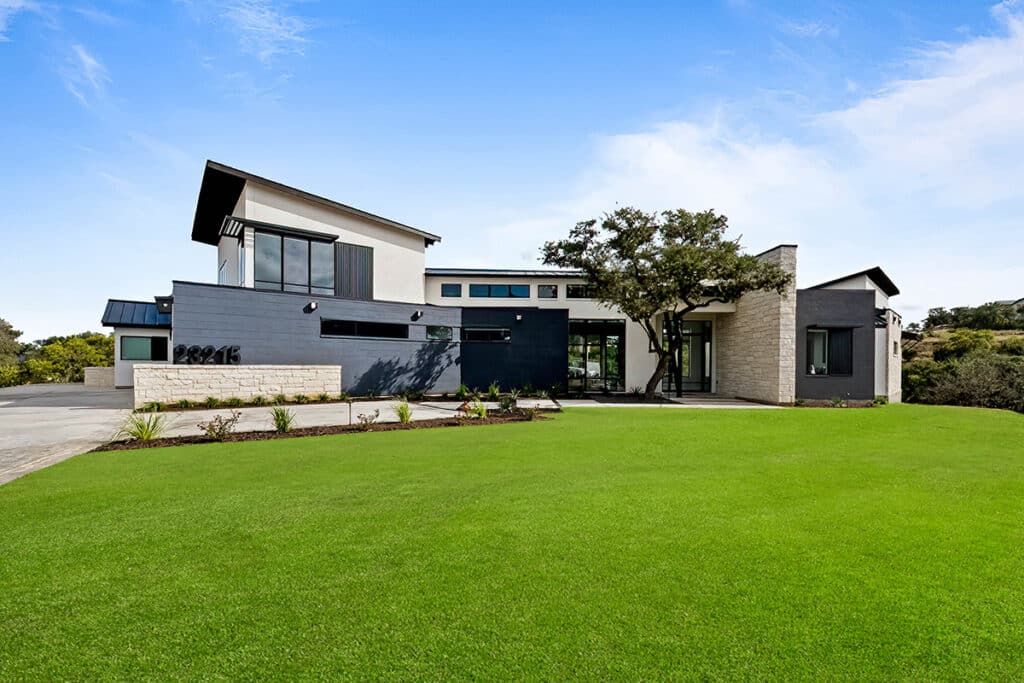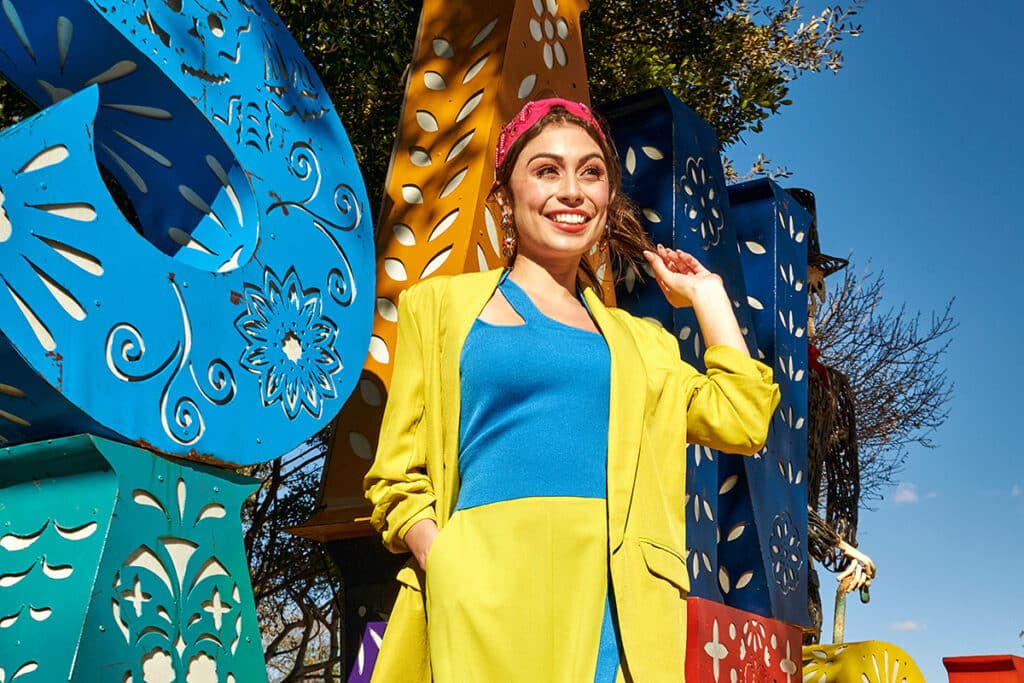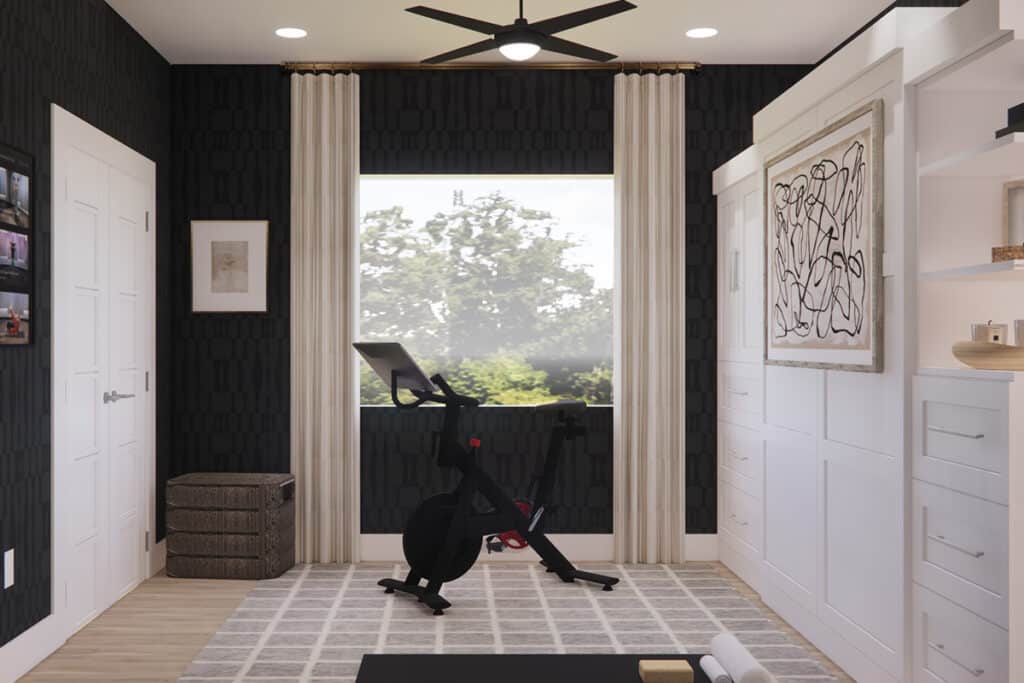The Monte Vista home of Henry Muñoz is a “sketch that is always evolving,” says the owner. As chairman of the board of directors and CEO of Kell Muñoz Architects, Inc., and an award-winning designer, he knows whereof he speaks. Since purchasing the circa 1922 house 15 years ago, he has made it uniquely his own.
Russell Brown was the architect for the Tudor dwelling. He designed four others in Monte Vista, according to Donald Everett’s informative book, San Antonio’s Monte Vista: Architecture and Society in a Gilded Age.The book is available for purchase at Schnabel’s True Value Hardware, a historic icon in itself and quite likely the oldest continuously operating business in Olmos Park.
Dr. and Mrs. Frederick J. Combe owned the house until it was acquired by Joseph H. Frost following World War II. In 1958, Mr. and Mrs. Joe Centeno, longtime grocery merchants in the Alamo City, became the owners.
It was from the Centeno family that Muñoz purchased the home, and it was an extremely meaningful acquisition. “I am a part of the Centeno family,” says Muñoz, “and I wanted to keep the house in the family … a house that has seen so many celebrations and even funerals. It has been a part of our extended family and continues to be so.” Many prominent persons, including senators and governors, have been guests in the house, he adds.
As for updating an early 20th-century home, Muñoz remarks, “I would say that I have done restoration, but I don’t think I have moved one wall. When I first moved in, it needed layers taken off.” The changes made were more a “stripping away of all the things that had been added through the years and the upgrading of systems.” That initially included removing wool carpeting to reveal and restore beautiful oak floors. Draperies, sheer curtains and even window screens were removed to expose the simple charm of gleaming six-oversix paned windows.
If one assumes the interior décor totally retains the ambiance and atmosphere of the early 20th century, it does not. With a respectful and definitive nod to the home’s origin, Muñoz has cleverly brought the house forward through several eras, from mid-20th century to the present day, both in furnishings and in art. A self-declared modernist with a bent for abstraction, Muñoz confirms, “I did not want to lose the character of what has been here before.” Hence, family heirlooms and other antique furnishings are found throughout the home in tandem with the contemporary.
Anchoring the living room is a traditional treasure with which this confessed modernist refused to part — a magnificent pastel Oriental rug with blue the dominant hue. When it came time to decorate the first floor, primarily the central living room, Muñoz looked to his good friend and internationally respected assembly artist, Franco Mondini-Ruiz, for assistance. The artist, a local attorney who gave up his law practice in 1995 to focus on his successful art career, wanted him to be rid of the rug.
Compromise was the solution. “We decided to play off the rug and developed a landscape of the modern and the classic,” says Muñoz. A pair of ice blue Italian Minotti sofas center the room and are served by 1972 Florence Knoll tables. A white Eero Saarinen mid-century womb chair complements the arrangement, as does a Mies van der Rohe design Barcelona chair by Herman Miller. Between the two is an elaborately adorned antique chest.
Two French chairs are upholstered in a whimsical fabric called “quatrefoil” created by the renowned Italian mid-century textile designer, Alexander “Sandro” Girard. Muñoz, who serves on the National Board of Trustees for the Smithsonian Institution, says the Smithsonian once featured a show titled The Opulent Eye of Alexander Girard.”And that’s where I decided I wanted his fabric in my home,” he says enthusiastically. A fedora in similar design and color sits serendipitously on one of the chairs.
The homeowner further explains the art in the room was the result of calling together a group of talented artists and designers after becoming interested in how diverse cultures come together in San Antonio. “I decided what I could do really well was collect contemporary Latino art,” he adds. Therefore, represented in the room are many works by contemporary artists, including Jesse Amado, Alexander Diaz, Andy Benavides and Beto Gonzales, along with installations by Mondini-Ruiz.
Gonzales’ clever “techno-visual” installation, a burning fireplace, glows on the screen of a television set within the fireplace. Fanciful delight is found at one wall where Benavides mounted a bedspring on white plastic. The artist purchased the springs for $15 from the back of a man’s truck. Incredulous, the seller inquired why Benavides would want the springs and quipped, “It ain’t got no bounce.” Voila, the installation was thus titledAin’t Got No Bounce.
Muñoz’ dining room with deep crimson walls is his favorite room in the home. A mid-century dining room set features chairs with a flocked fabric he saw in a hotel when he lived in New Orleans, and he tracked down the source.
Contrasts abound in the room. A crystal chandelier and wall sconces are decades removed from the altarpiece in a massive contemporary triptych custom made for the room by Robert Tatum. A midnight black rug with circles in a relief design is a custom creation. Balloon Dog, a red blown-glass creation by Jeff Koons, sits in proximity to a large still life of roses in a vase by Chuck Ramirez. “This is about life and represents the kind of f
lowers you buy to take to a friend in the hospital,” muses Muñoz. “I just love it.”
Beneath the painting is a small painted cart purchased from a woman named Beatrice who once had a booth in the Nuevo Laredo market. Within the cart, cactus grows profusely. It’s the last thing you would think to find in a room where two antique French chairs with red upholstery are centered with Italian coats of arms purchased in Venice.
The surprises do not end there. An Italian table topped with an Empirestyle marble-top dessert table sits across the room from pre-Columbian artifacts housed in a china cabinet with Muñoz’ crown worn during his reign as Rey Feo. It is a special crown representing the 50th year of Rey Feo, and though it belongs to the Bob Bullock Texas State History Museum, it is promised to the Smithsonian Museum of American History and will find its way there eventually.
Surrealist Pedro Friedeberg is represented in the room along with Miguel Covarriubias, whose art regularly made the pages of The New Yorker andVanity Fair magazines.
In updating a downstairs powder room, Muñoz mentions he wanted a modern feel paired with baroque ambiance. Artist Cisi Jary and her daughter, Pam Jary Rosser, gave the dark walls a gilded pattern. An ornate gold frame holds a photograph of the late Latino songstress Selena. It was taken by Al Rendon, SAN ANTONIO WOMAN photographer, who also took the photos for this story.
Along the back of the home, three distinctive sitting rooms invite one for a respite. The smallest is a clever anteroom holding works by John Mata and pop artist Alejandro Diaz and the piano Muñoz’ mother gave him when he was 12 years old.
Adjacent is a small sunroom where the homeowner says his family likes to hang out. A comfortable high-back sofa from Horse of a Different Color sits opposite slipper chairs long in the family. An Indian rug on Saltillo tile floors is centered with a coffee table serving the area. Folk and religious art are prominent in the room.
Nearby is a former outdoor porch closed in by the Frost family, who added an elevator at the same time. Contemporary wicker furniture and white Karim Rashid chairs encircle a zebra rug in the sitting area. “This room has an African thing going on here,” smiles Muñoz. An ottoman constructed of cut hay is a conversation piece.
Two towering sculptures by local artist Ann Wallace are constructed with stacked slices of wood in graduated sizes. She documents and presents her clients with information relative to the origin of the wood. A swimming pool is under consideration for the adjacent backyard. With that in mind, Muñoz has chosen pool-friendly fabrics for the enclosed porch.
Muñoz has left the kitchen much as he remembers it as a young man, when Mrs. Centeno, known as Mama Grande, held forth. “This room is the place where my family gathered around the kitchen table for generations,” he explains. It was not, however, around the Florence Knoll table and Philippe Starck chairs that are present now.
Upper cabinet doors were removed, and Muñoz painted the cabinet interiors in blue, yellow, green and pink, pulling the hues from flowers in the original ceramic tile still in place. Lower cabinets hold original hardware. Appliances are traditional white, and the original white bead board remains, though upper walls are painted orange.
Upstairs is a two-bedroom master suite that joins with a media room and sleeping porch beyond. Muñoz sleeps in one bedroom in the summer and the larger room in the winter. The summer room holds an 18th-century dressing screen, a handsome “junk store” bed, a 20th- century chair by Paul McCobb and the art of Alberto Mijangos, Beto Gonzales and Cesar Martinez. A special treasure is his grandmother’s tooled leather makeup case.
The winter master bed carries a rich red and gold coun- terpane and pillows. On the wall above is a painting of an open coconut. Overlooking the area is an elongated painting by Alex Rubio. It hangs above a dresser centered with objects representative of the homeowner’s father and other fathers. The painting depicts the eyes and forehead of an old man. Muñoz remarks that some feel the eyes seem angry and austere. Not so, says he. They seem, instead, to be a warm representation of his father looking over him.
Other art in the room includes a Francisco Goya print from his Los Caprichos series and a Christ figure painted by Vincent Valdez. Whimsy is seen in an installation of off-white balloons tied together in a large ovalshaped assembly.
The nearby media room offers comfortable seating and clever storage of media accoutrement within a red metal lowboy locker-style credenza designed by Nicholai Wiig Hansen for Ikea.
Beyond, a former sleeping porch, lush in shades of green, is centered with an 18th-century metal bed piled with massive pillows in airy green prints. Molded glass tables in pastel hues complete the room. The principal occupant is one strikingly beautiful purring Persian cat. All rooms within the master suite of four rooms offer the ambiance of living within a treehouse.
Up a narrow stairwell to a third level, one finds a cozy library filled with built-in bookshelves, many holding toys from Muñoz’s childhood. He recalls sneaking up to sunbathe on a rooftop outside a front window.
The house is some 8,000 square feet and might seem too large for one person, acknowledges Muñoz. But, he adds,”It (the house) is very seldom about one person. It is about family, community and public use by organizations.” For example, he relates, it was in his home that Smithsonian representatives made the decision to come to San Antonio and be involved in the National Center for Latino Arts and Culture scheduled to move soon into its permanent home in the Museo Alameda in Market Square.
Author: Kay McKay Myers
Photographer: Al Rendon




